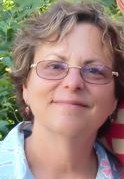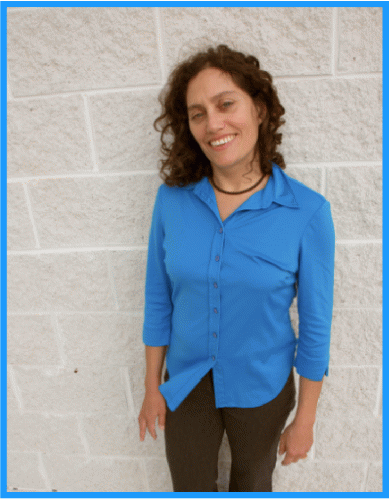My guest today is Amanda Abrams, a freelance writer currently living in Durham, NC.
Joan Brunwasser: Welcome to OpEdNews, Amanda. I read your recent article in Yes!: How to Meet People Who Are Different from You. Why did you write it, and why now?
Amanda Abrams: I've been thinking about this for a long time. Above all, I've noticed how limited my own circles are--how so many of my friends and acquaintances are roughly my age and are, like me, middle class and white. In 2016, after the election, I realized I didn't personally know a single soul who'd voted for Donald Trump--and that felt like a problem, because I couldn't understand those voters and they felt very alien to me. So I brainstormed ways to change that and broaden my network, but I couldn't come up with any strategies that felt significant or had the potential to be permanent.
I think knowing a range of people and having a sense of their experience is always important, but especially now, because there's increasing ugliness around politics; and a big part of it, I believe, comes from not being familiar with one another in a personal way. And of course all the Black Lives Matter protests have brought home the point that we're still, as a society, way too segregated in the way we live our daily lives.
JB: The beauty of the old and familiar is that it makes us feel safe and cocooned like nothing else. The downside is that we rarely pause to consider what comprises that comfort zone - whether it's a cozy corner or a cluster of friends and like-minded neighbors - and if we are satisfied with what it says about us. So, moving beyond it is hard. Especially in a pandemic, when everything we do, everywhere we go or don't go, every decision we make is fraught with scary, potential consequences. It's tempting to pull up the drawbridge, stay home, in our pajamas, eating carbs and watching mind-numbing shows or shopping online. Tell us about your move to Durham and what you had hoped to accomplish, with your choice of neighborhood and schools.
AA: Yes, I agree, this isn't necessarily the best time to think about expanding one's world and contacts, but unfortunately it's a time when we desperately need to be considering it and figuring out how to do it. As I said, this has been on my mind for a while. I used to live in a gentrifying neighborhood in Washington, DC, and I was massively struck there by how neighbors--particularly longtime African American residents and newer young professionals--rarely interacted. They'd literally pass each other on the street without looking at one another, or would live next door to each other without ever really talking. I eventually wrote articles about it and tried to write a book about it; the latter ultimately didn't work out, in part because it's hard to base a narrative around people's lack of interaction. But the upside for me was that I got to know tons of people in that community and became comfortable hanging out with all kinds of races, ages, and classes. That's the upside of gentrifying neighborhoods: the opportunity to meet different kinds of people is right there.
When my family and I moved to North Carolina, where I grew up, we originally rented a house in another gentrifying neighborhood and really enjoyed it, for those same reasons. But when we were looking to buy, we found a house in a neighborhood that was mostly white, but whose neighborhood school was very mixed. For lots of reasons, including the mixed nature of the school, we bought that house and moved there, and that's where we live now. As I wrote in the article, we hoped that sending our son to that kind of school would result in him being open minded, unentitled, and comfortable with a wide range of people. And we simultaneously assumed we'd also get to know a diverse group of parents--but that hasn't happened, because we've managed to self-segregate within the school, initially without even being conscious of it.
JB: Your account of self-segregating, despite a conscious attempt to choose differently, struck a chord with me. Often, good intentions are just not enough. Let's dig deeper into why, in this case, they weren't.
AA: There are so many reasons we often tend to self-segregate, and that my husband and I did in this case. In general, we all tend to go with what feels familiar and comfortable--and white people tend to be less tolerant of that kind of discomfort because we encounter it far less often. So all other things being equal--let's say you're at a conference, and can choose from any number of people to talk to--many of us will pick people who look and seem like us.
But all other things usually aren't equal, and often the self-segregating is also the result of economics. So in our case, a subset of students would hang out after school and frolic in the schoolyard while their parents talked to one another. Our son was one of them, and it was one of the things we liked best about the school. Naturally, talking day after day led to closeness among us parents, and those people became the folks we'd contact if we were going to be late or needed help with something. But, like us, most of those families lived close enough to the school to walk or bike there, in a neighborhood whose home values are higher than average for the city. Also, they had flexible enough work schedules--or no work at all, in the case of some of the stay-at-home parents--that they could pick up their kids at 3:45.
Both of those are based in economics, and that's often the biggest reason we wind up becoming friends with people like us. Socioeconomic status drives a lot of our choices and habits, and can keep us apart. It can affect our schedules, where we live, how we communicate, what we enjoy doing in our free time, and many other elements of our lives. So we can have great hopes of meeting people who are different from ourselves, but if that difference involves a socioeconomic gap, we may simply not have much exposure or opportunity. As a result, we have to be far more intentional about the choices we make, and have to find ways to step out of our personal patterns, if we really do want to diversify our circle.
JB: That's a pretty sobering assessment, Amanda. Please share with us what it might look like to keep pushing to overcome all the hurdles that keep us self-segregated. We do still have options, even if they might not occur to us without some prodding and re-examination.
AA: There are most definitely ways to overcome those hurdles. Something I didn't mention in the article, by the way, is that my family is fostering a baby whom we may adopt. He's Black and we're white, and all the reading I've done highlights how important it is to raise a transracial adoptee or foster child among people of his or her own race. So we have a very real reason to take this seriously.
What it requires is repeatedly making conscious choices to step out of our patterns. For us, that means shopping at grocery stores in neighborhoods that are more diverse than ours; going to stores and libraries in other parts of town; committing to volunteer activities and hobbies that draw a wider range of participants. It also means trying hard to be aware of our unconscious habit of turning toward the familiar--that is, choosing to talk to someone who doesn't look or seem a lot like me in those cases where I might have options of who to talk to. Going with a Black babysitter rather than a white one. Picking the Black hair stylist rather than the white one. Reading books by Black authors.
(Note: You can view every article as one long page if you sign up as an Advocate Member, or higher).







